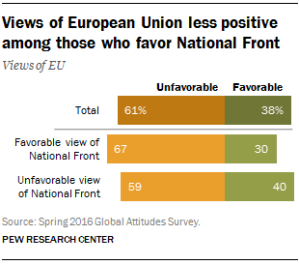Pew Research Center today released a new survey of more than 4,000 U.S. adults that examines online harassment in the United States, as well as Americans’ attitudes toward its underlying issues. In this Q&A, the study’s author, Maeve Duggan, explains how and why the survey was conducted.
What motivated you to study online harassment in America?

There’s been an incredible amount of activity around online harassment since we last looked at this subject in 2014. Not only have tech companies made major efforts to address harassment on their platforms (with varying degrees of success), but we’ve also seen increased attention from policymakers and thought leaders, along with other studies that have documented online harassment in different ways. Of course, all of this attention doesn’t mean the problem has been solved. There have been a number of high-profile incidents over the years and everyday users still struggle at times to keep harassment at bay. Given the evolving nature of the topic, we thought it was a good time to check back in on Americans’ experiences and attitudes.
How did you go about measuring online harassment?
Our definition of online harassment includes six broad behaviors: offensive name-calling, purposeful embarrassment, stalking, physical threats, harassment over a sustained period of time, and sexual harassment. We used the same definition in our 2014 survey, which means that we can track changes over time. For example, some 41% of Americans today say they have experienced at least one of these behaviors at some point, up modestly from 35% of Americans in 2014.
We felt it was important that our definition of harassment include a range of behaviors, from the relatively mild to the severe. A portion of adults have only faced name-calling or purposeful embarrassment, while others have been targeted with any of the other four more severe behaviors. These classifications help provide an important window into the nature of online harassment. They show that people’s responses and reactions to harassment depend in many ways on the severity of their experiences. For instance, those who have had severe online harassment experiences are more likely to say it caused them stress, and they’re also more likely to say they took protective steps like adjusting their online privacy settings in response.
What new topics or issues did you cover that weren’t included in the 2014 report?
We used this survey to go beyond our 2014 work in a number of ways. Besides adding follow-up questions about personal experiences with online harassment, we put a lot of focus on new attitudinal measures. We wanted to know not only how Americans experience online harassment, but why they think it’s occurring and what should be done about it. For example, we asked about the balance between free speech and safety online, whether or not offensive content online is taken too seriously, and whom people hold responsible for addressing harassment. This survey also explores the role of anonymity in enabling harassment and the role of bystanders to either escalate or stop it. Finally, we asked a series of questions on other negative experiences people might have online, such as having false information posted about them, being exposed to explicit images, or their familiarity with invasive tactics like hacking or trolling.
What challenges did you face in approaching this topic?
Online harassment can be highly subjective. What one person can easily brush off might be hurtful to someone else. And people’s previous experiences – or even incidents they have observed happening to others – can influence how they react to online harassment. Creating a questionnaire that could capture those subtleties was important. Besides including a broad spectrum of behaviors in our definition, we also gave people a chance to describe their experiences in their own words through open-ended questions. The responses we received are so rich that we feature them prominently throughout the report to show readers the human experiences behind the data points. It’s fascinating because some people view harassment as totally overblown, while others have had to go so far as to involve the police.
Lastly, we explicitly asked respondents whether they consider their most recent incident to be “online harassment.” This question, more than anything, shows how subjective online harassment can be. About a third of people who met the survey’s definition of harassment said they did count their most recent experience as “online harassment,” another 37% said it was not online harassment, and the rest said they were unsure. Even more interesting was that some people categorized in the “severe harassment” group said they didn’t consider their experience to constitute harassment, while other people who were in the “less severe” group said it was online harassment. When it comes to online harassment, there’s no one-size-fits-all option.
Online discourse received a lot of attention during the 2016 election. Did you see any political tensions reflected in this survey?
Politics was definitely top of mind for many respondents. We asked a new question this year about the reasons people felt they were harassed online. Some 14% of Americans – or 35% of those who have been harassed online – say they were targeted because of their political views. This was the most common response in a list that included things like physical appearance, gender, race or ethnicity, and religion. And there weren’t partisan differences here – Democrats and Republicans are equally likely to say their political views have led to abuse online.
The election – and politics more broadly – also came up repeatedly in the open-ended responses we received. The tone of discussion really left a bad taste in many respondents’ mouths. Some people talked about leaving platforms entirely, while others described hateful language they saw being lobbed at candidates and other users. One respondent said, “Never have I seen people being so malicious to each other than after the election. People being bullied and called names simply for expressing their opinions or because they disagree with someone’s politics or views.”
It’s important to point out that we can’t tell from the data whether the tone online during the 2016 election was distinct or if it’s par for the course. We didn’t ask about politics in our 2014 online harassment survey, so there’s no direct point of comparison. For more context, we published a report in October that explored the political environment on social media in the lead-up to the election. In that report, a majority of Americans said they simply try to avoid politics altogether and find it stressful and frustrating when it comes up on social media.
For more: Read the full report and our key takeaways from this survey.

